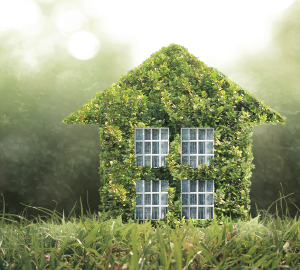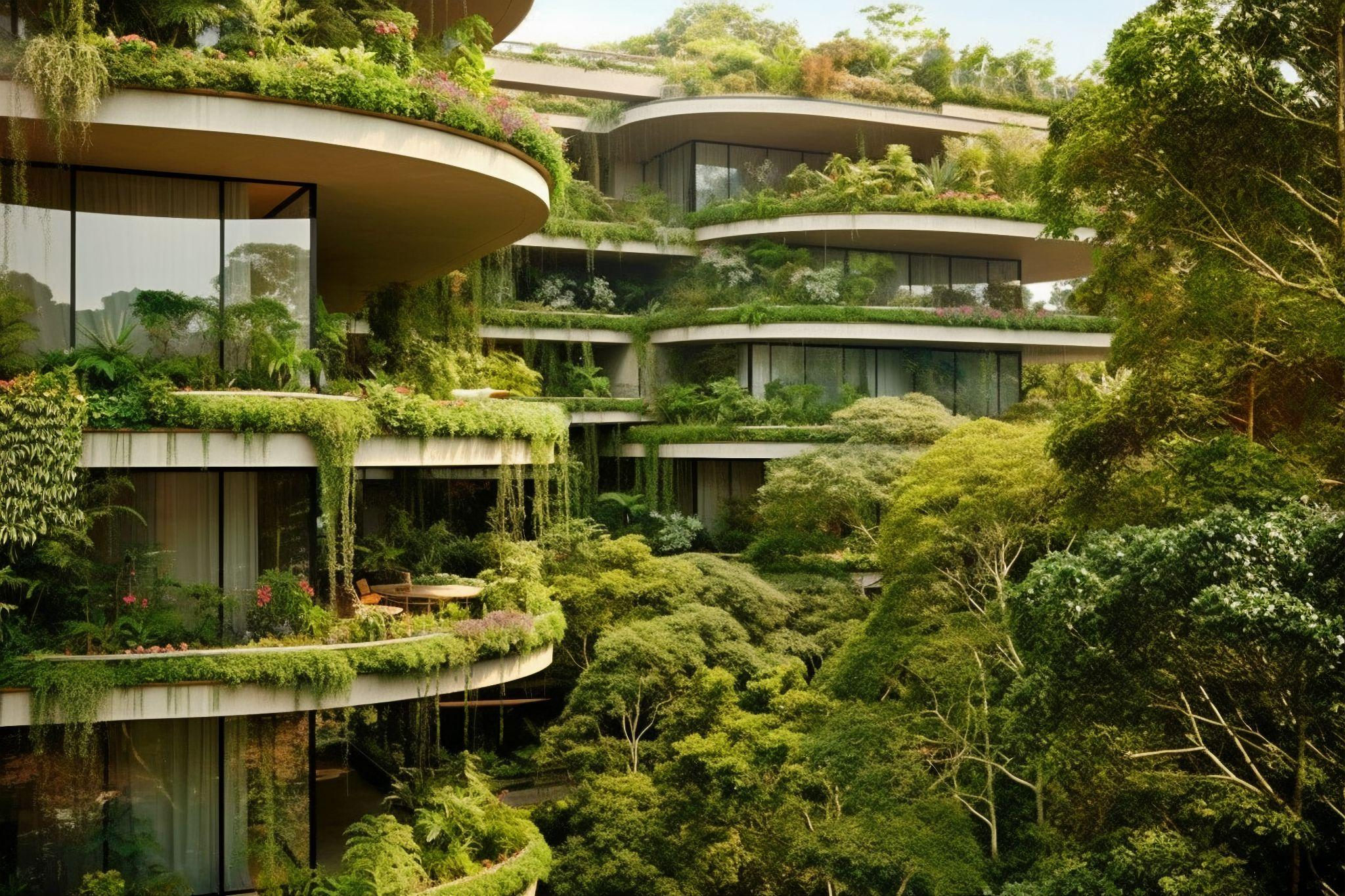Accretive Cleantech Finance Private Limited is now Ecofy Finance Private Limited
GREEN HOMES OF THE FUTURE: INNOVATIONS IN SUSTAINABLE LIVING SPACES
As the world faces pressing environmental challenges, the concept of green homes has emerged as a groundbreaking solution for sustainable living. By blending sustainable architecture, eco-friendly materials, and cutting-edge technology, these homes aim to reduce environmental impact while enhancing comfort and efficiency. With innovations such as net-zero homes, recycled construction materials, solar panels, and smart energy systems, green homes represent the future of living.

The Rise of Green Homes
The demand for eco-friendly housing is surging, driven by growing awareness
of climate change and the need for energy conservation. Green homes are
designed to minimize carbon footprints, conserve natural resources, and
integrate renewable energy sources. This paradigm shift in housing is not
just a trend; it's a movement toward a sustainable future.
Net-Zero Homes: A Key Innovation
One of the most transformative developments in sustainable architecture is the net-zero home. These homes are designed to produce as much energy as they consume, primarily through renewable energy sources like solar panels and wind turbines.
- Energy Efficiency: Net-zero homes use energy-efficient appliances, LED lighting, and superior insulation to minimize energy loss.
- Renewable Energy: Solar panels and energy storage systems ensure that the home can sustain itself without relying on external power grids.
-
Water Conservation: Features like rainwater harvesting and
low-flow fixtures are integrated to reduce water wastage.
These innovations not only lower utility bills but also make net-zero homes a cornerstone of the future of living.
Sustainable Materials: Building for the Planet
The materials used in construction significantly impact the environment. Green homes prioritize recycled and sustainable materials, reducing waste and energy consumption during production.
- Recycled Steel and Plastic: These materials are repurposed to build frameworks, walls, and other structural elements.
- Bamboo and Cork: Renewable materials like bamboo and cork are favored for flooring and interiors due to their rapid growth and low environmental impact.
-
Eco-Friendly Concrete: New technologies enable the
production of low-carbon concrete, which reduces greenhouse gas
emissions.
By choosing these materials, green homes exemplify the principles of sustainable architecture while promoting eco-friendly housing practices.

Smart Energy Systems: Redefining Efficiency
Technology plays a pivotal role in making green homes more efficient and
convenient. Smart energy systems allow homeowners to monitor and control
energy usage in real time, ensuring minimal wastage.
- Smart Thermostats: Devices like Nest and Ecobee optimize heating and cooling based on occupancy and weather patterns.
- Energy Management Systems: Advanced systems track energy consumption and suggest ways to improve efficiency.
-
Battery Storage Solutions: Storing excess energy generated
by solar panels ensures a steady power supply, even during outages.
These innovations not only align with the goals of eco-friendly housing but also enhance the overall quality of life.
Designing for a Sustainable Future
The architecture of green homes goes beyond energy efficiency and sustainable
materials. It also considers the well-being of occupants and the surrounding
environment.
- Biophilic Design: Incorporating natural elements like greenery, natural light, and ventilation improves mental and physical health.
- Passive Design Principles: Strategic placement of windows, walls, and insulation maximizes natural heating and cooling.
-
Community Integration: Eco-friendly housing developments
often feature shared green spaces, gardens, and community centers.
These elements demonstrate how green homes are shaping the future of living by fostering healthier and more connected communities.
The Economic and Social Benefits of Green Homes
While the upfront costs of green homes may be higher, the long-term savings
and benefits outweigh the initial investment.
- Cost Savings: Energy-efficient systems and renewable energy sources drastically reduce utility bills.
- Increased Property Value: Sustainable homes are in high demand, making them valuable assets in the real estate market.
- Environmental Impact: By reducing energy and water usage, green homes contribute to a healthier planet for future generations.
Conclusion
Green homes are not just the
future of living; they are the present-day answer to creating
a sustainable and eco-conscious society. By embracing net-zero homes, recycled
materials, and smart energy systems, we can significantly reduce our
environmental impact while enjoying comfortable and efficient living spaces.
The journey toward sustainable architecture and
eco-friendly housing may have its challenges, but the
benefits—for individuals, communities, and the planet—are immeasurable.
Together, we can pave the way for a greener, brighter future.
FAQs
-
What are green homes?:
Green homes are innovative, eco-friendly living spaces designed for sustainability and minimal environmental impact. -
How do green homes reduce energy consumption?:
They integrate solar panels, energy-efficient appliances, and smart systems for optimal energy use. You can opt for financing options here: https://bit.ly/4022ulC -
What materials are used in green homes?:
Green homes use recycled, renewable, and sustainable materials to ensure minimal environmental footprint. -
Do green homes include smart technology?:
Yes, they incorporate smart home technology to monitor energy, water usage, and indoor climate efficiently.



